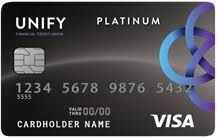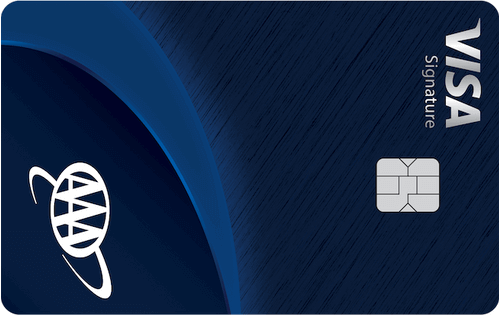- myFICO® Forums
- Types of Credit
- Credit Cards
- Re: Highest initial credit limits?
- Subscribe to RSS Feed
- Mark Topic as New
- Mark Topic as Read
- Float this Topic for Current User
- Bookmark
- Subscribe
- Mute
- Printer Friendly Page
Highest initial credit limits?
Is your credit card giving you the perks you want?
Browse credit cards from a variety of issuers to see if there's a better card for you.
- Mark as New
- Bookmark
- Subscribe
- Mute
- Subscribe to RSS Feed
- Permalink
- Report Inappropriate Content
Re: Highest initial credit limits?
Starting Limits are complex, both based on lender and consumer profile variables. I've written a lot on My FICO about personal profile variables based on my own experiences and observations about others. You can read some of my posts if you start >HERE< and go back with the links to older threads. The main personal factors for growing the highest limits are money (amount of income, debts and debt-to-income ratios, significant assets, or high cash flow such as from a thriving side business or reimbursed business expenses) and time (which leads to mature credit files with many open/closed revolving credit lines, credit mix including installment loans such as mortgages or auto loans, higher FICO scores, and long documented repayment histories showing responsibility and reliability.) Other personal factors which can affect SLs can include the amount of recent credit-seeking as indicated by hard inquiries and new accounts. Even when my FICOs were very high with high income and a thick file, my SLs have been lower when I have more recent credit-seeking.
I mention all of these personal factors first since they will obviously affect the starting limits someone receives, regardless of the lender. So if you were to take various data points about approvals out of the context with the personal profile variables, you might reach an erroneous conclusion about the LENDER when in reality the variation in limits you observed were more based on PERSONAL factors.
Disregarding the above personal variables and assuming the exact same credit profile were to apply with different lenders or for different cards, there are definitely variations. My interpretation is that lenders' starting limits vary based not only on the size of their total assets but also on underwriting criteria. Consequently, making a blanket assumptions that either banks or credit unions are more generous with SLs would be inaccurate. The largest US Credit Union, Navy Federal, is much larger in asset size than many banks and is able to offer very generous credit limits for a credit union, up to $80K total. But many smaller, local credit unions may not be able to match the same limits from larger banks and credit unions. So the correct answer is that it depends on each one, just as it depends on the personal profile metrics above. Moreover, those SLs with the same lender are subject to changes in underwriting terms at any moment based on their economic health and the projections of the economy as-a-whole. While I don't have anything other than my own personal observations and data points to back this up, I believe each lender also sets normal approval ranges for each credit card product. And those ranges vary based on the product as well as the consumer profile. As a general rule, I believe the starting limits increase from secured cards, then basic no-AF no-rewards cards, then no-AF rewards cards, then mid-fee travel rewards cards ($49 to $250), then finally high-AF travel cards (>$250). There are exceptions, of course, but these could be chalked up to personal profile variables. For example, my highest SLs were $35K with USAA on a non-rewards low-rate Visa and $35K on my high-AF Chase Sapphire Reserve. However, I had a long relationship with USAA prior to the application and little other recent new credit. And Chase also gave me lower SLs around the same time-frame on no-AF or lower-AF cards. You might see someone get approved for a $30K SL on a Chase Sapphire Reserve while someone else got a $6K SL on a CITI Custom Cash, therefore concluding that Chase is more generous than CITI. But that would disregard that myself and several other members received $30.5K SL on the high-AF CITI AAdvantage Executive card last year. Or than someone got $6K SL on a CITI Custom Cash while another member got $15K SL on a PenFed Power Cash Rewards, concluding that credit unions are more generous. But if you compared that PF PCR $15K approval to the CITI Executive $30.5K approval, you might reach the opposite conclusion. So these are all isolated data points which may not account for the profile variables, lender variables, and even card variables.
Tldr: YMMV and there is no single rule about where/how to get the highest limits. And making comparisons about other's approvals on My FICO can be misleading due to those variations. Proceed with caution and open eyes.






















Business Cards









Length of Credit > 42 years; Total Credit Limits > $947K
Top Lender TCL - Chase 156.4 - BofA 99.9 - CITI 97.5 - AMEX 95.0 - NFCU 80.0 - SYCH - 65.0
AoOA > 32 years (Jun 1993); AoYA (Oct 2024)
* Hover cursor over cards to see name & CL, or press & hold on mobile app.
- Mark as New
- Bookmark
- Subscribe
- Mute
- Subscribe to RSS Feed
- Permalink
- Report Inappropriate Content
Re: Highest initial credit limits?
My all-time highest initial SL was $35k with the Chase Amazon card. My highest CL obtained through combining limits is my FNBO BucksBack card with the $85k CL and 11.5% V APR.




































- Mark as New
- Bookmark
- Subscribe
- Mute
- Subscribe to RSS Feed
- Permalink
- Report Inappropriate Content
Re: Highest initial credit limits?
@ptatohed wrote:My highest out of the gate and my highest current is my IHG Premier (not in my sig yet). $34,000. I think my second is my Savor One at $20,000. I have only proactively asked for a CLI once in my life and that was to get my AOD from a limiting $5k to a more than enough $10k.
So ... o ... o your the person who made it so the AOD was no longer sustainable? CLIs ... should have known! ![]()
- Mark as New
- Bookmark
- Subscribe
- Mute
- Subscribe to RSS Feed
- Permalink
- Report Inappropriate Content
Re: Highest initial credit limits?
[Ignore]
- Mark as New
- Bookmark
- Subscribe
- Mute
- Subscribe to RSS Feed
- Permalink
- Report Inappropriate Content
Re: Highest initial credit limits?
My highest starting limits were with Chase, I got approved for a CFU and CSP both were 2 days apart and were $50k each. These were my first cards with chase after burning them in BK 7 years earlier.
- Mark as New
- Bookmark
- Subscribe
- Mute
- Subscribe to RSS Feed
- Permalink
- Report Inappropriate Content
Re: Highest initial credit limits?
@Aim_High wrote:... As a general rule, I believe the starting limits increase from secured cards, then basic no-AF no-rewards cards, then no-AF rewards cards, then mid-fee travel rewards cards ($49 to $250), then finally high-AF travel cards (>$250).
This is the way. (IOW, overall @Aim_High 's complete answer I believe is the most accurate answer here and this specific mention is the most reliable informatoin IMHO based on reading everything I could about this subject.)
- Mark as New
- Bookmark
- Subscribe
- Mute
- Subscribe to RSS Feed
- Permalink
- Report Inappropriate Content
Re: Highest initial credit limits?
My personal highest starting limit was with Langley FCU....21K.
EX fico08=815 06/16/24
EQ fico09=809 06/16/24
EX fico09=799 06/16/24
EQ fico bankcard08=838 06/16/24
TU Fico Bankcard 08=847 06/16/24
EQ NG1 fico=802 04/17/21
EQ Resilience index score=58 03/09/21
Unknown score from EX=784 used by Cap1 07/10/20
- Mark as New
- Bookmark
- Subscribe
- Mute
- Subscribe to RSS Feed
- Permalink
- Report Inappropriate Content
Re: Highest initial credit limits?
Highest SL was $34.9k for a BoA card in 1994. It's one of my newest cards. I did get a Best Buy store only card in 2011 but they were stingy with SL.
Fico 8: .......EQ 850 TU 850 EX 850
Fico 4 .....:. EQ 809 TU 823 EX 830 EX Fico 98: 842
Fico 8 BC:. EQ 892 TU 900 EX 900
Fico 8 AU:. EQ 887 TU 897 EX 899
Fico 4 BC:. EQ 826 TU 858, EX Fico 98 BC: 870
Fico 4 AU:. EQ 831 TU 872, EX Fico 98 AU: 861
VS 3.0:...... EQ 835 TU 835 EX 835
CBIS: ........EQ LN Auto 940 EQ LN Home 870 TU Auto 902 TU Home 950
- Mark as New
- Bookmark
- Subscribe
- Mute
- Subscribe to RSS Feed
- Permalink
- Report Inappropriate Content
Re: Highest initial credit limits?
@Thomas_Thumb wrote:Highest SL was $34.9k for a BoA card in 1995. It's one of my newest cards. I did get a Best Buy store only card in 2011 but they were stingy with SL.
Wait, a card from 1995 is one of your newest?? ![]()
Everyday 5% CB:
Chase prime Visa // citi CUSTOM CASH “A” // citi CUSTOM CASH “B” // citi SHOP YOUR WAY (5% gas (in points), lucrative spending offers) // mylowe’s Rewards // Target circle card // primis Perks debit Visa (50c CB per transaction (5% CB or more up to $10 spend))
5% CB rotating:
Chase “OG” freedom Visa // DISCOVER it Cash Back // nusenda CU Platinum Cash Rewards
Everyday 4% CB:
US Bank Smartly (v1.0)
Everyday 3% / 2.2% CB:
AOD FCU Visa Signature (3%, sockdrawered) // upgrade Cash Rewards Elite (2.2%, sockdrawered)
Welcome Offer / credits only:
Chase SAPPHIRE PREFFERED (grabbed my $1,000, sockdrawered, will cancel) // NFCU FLAGSHIP REWARDS (elevated Welcome Offer, annual prime credit, sockdrawered)
Hotel card:
Chase IHG ONE REWARDS PREMIER (elevated Welcome Offer, 1 free night/yr)
On my radar:
Langely FCU Signature Cash Back (5% CB monthly selectable cat) // Safe CU Cash Back+ (Quarterly rotating 5% CB cats plus bonus cats) // upgrade MyFive Cash Rewards (5% CB monthly selectable cat) // US Bank Kroger (and family) World Elite Master Card(s) (5% CB Mobile Wallet)
- Mark as New
- Bookmark
- Subscribe
- Mute
- Subscribe to RSS Feed
- Permalink
- Report Inappropriate Content
Re: Highest initial credit limits?
@ptatohed wrote:
@Thomas_Thumb wrote:Highest SL was $34.9k for a BoA card in 1995. It's one of my newest cards. I did get a Best Buy store only card in 2011 but they were stingy with SL.
Wait, a card from 1995 is one of your newest??
I know, right!?! @ptatohed ![]()
@Thomas_Thumb may have set our forum record for gardening! I admire him for his discipline in sticking to his cards that work for him without chasing new ones all the time like many of the rest of us. However, I share in his philosophy in-part because I keep four older cards from 1993 to 2000. (*Discover, UMB, Chase, BofA.) My cards from the 1980's were closed by myself or lenders.
He summarized his cards and age for me recently at this link:
Thomas_Thumb_Cards






















Business Cards









Length of Credit > 42 years; Total Credit Limits > $947K
Top Lender TCL - Chase 156.4 - BofA 99.9 - CITI 97.5 - AMEX 95.0 - NFCU 80.0 - SYCH - 65.0
AoOA > 32 years (Jun 1993); AoYA (Oct 2024)
* Hover cursor over cards to see name & CL, or press & hold on mobile app.